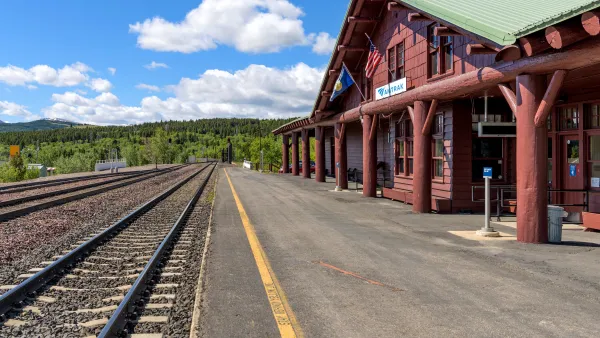From a planning and design perspective, China no longer needs our help. It took 20 years took to get to that point, but my last two trips there have left the impression that US architects and planners have given the Chinese the most relevant information that they need to build their own country with enough technical and sustainable criteria to know right from wrong. For now, China has caught up with (and in some cases surpassed) the rest of the developed world, allowing them to pull the throttle back a bit on what gets built and where.
Signature projects continue to happen, like the second half of the 2010 World's Fair (Better City, Better Life) and Shanghai Tower, soon to be the tallest building China. Meanwhile, the Chinese people have realized their own transformation and appreciate the marvels that they have created as they adapt to their new lifestyles in working, living, shopping, learning, eating and entertainment. There is a bit of a sense of arrogance now in the big cities, but also a general understanding of what makes China work and a confidence that they have reached a platitude of their own. In hindsight, the agricultural countryside and rural areas still have not been addressed in a meaningful way and the masses will continue to migrate towards the large metropolis which will eventually feel the strain and force further redevelopment.
International planners and architects are now setting their sights on India with more intent. For some, this territory is not new. Many of the world's largest AEC firms have multidisciplinary offices in Mumbai, Delhi and Bangalore. What is new is the reception that these businesses are getting - and it's welcoming.
Even today, India remains at least ten years behind China in terms of utilities, infrastructure, building design and technology. This gap will not close anytime soon as the freewheeling politics in New Delhi are structured completely different from the edicts in Beijing.
What is clear is that like China, land planning in India has taken the forefront in helping decide how the country will develop and where. Unlike China, land parcels are fragmented and difficult to assemble and therefore, large scale private development is slow. Special Economic Zones (SEZ) that help foster tax free enterprises that help import and export all kinds of products and services from power to computer chips to wind turbines are creating jobs and propelling the basic need for economic growth that will eventually be the catalyst for national change. This manufacturing base for both domestic and international growth is essential now.
Like the Chinese culture that many architects and planners admire, India offers a completely different aesthetic for design. The country's vibrant colors, spices and religions invigorate all five human senses at once and the people are extremely positive about what lies ahead. English language and units of measure make communication easier and being centrally located makes global solutions possible supported by India's unmatched technological capabilities.
Indian people love both discourse and debate. Their decision making process is engaging and entertaining; as democratic as one can image and almost to a fault. It can become tiresome, but we must embrace it. For just as the Chinese are receptive to outsiders "in a polite way", Indians want the same access to our intellect and global experiences, but expect to participate wholeheartedly.
Finally and most important, we need to show our willingness and commitment to search out and align with local strategic partners that share similar values and ethics. After all, it's their country and by taking the time to nurture these relationships in a coordinated effort shows that we have patience, allegiance, stability, confidence and consistency, which ultimately leads to credibility and trust.
And in our business, there is nothing more important than that.

National Parks Layoffs Will Cause Communities to Lose Billions
Thousands of essential park workers were laid off this week, just before the busy spring break season.

Retro-silient?: America’s First “Eco-burb,” The Woodlands Turns 50
A master-planned community north of Houston offers lessons on green infrastructure and resilient design, but falls short of its founder’s lofty affordability and walkability goals.

Delivering for America Plan Will Downgrade Mail Service in at Least 49.5 Percent of Zip Codes
Republican and Democrat lawmakers criticize the plan for its disproportionate negative impact on rural communities.

Test News Post 1
This is a summary

Test News Headline 46
Test for the image on the front page.

Balancing Bombs and Butterflies: How the National Guard Protects a Rare Species
The National Guard at Fort Indiantown Gap uses GIS technology and land management strategies to balance military training with conservation efforts, ensuring the survival of the rare eastern regal fritillary butterfly.
Urban Design for Planners 1: Software Tools
This six-course series explores essential urban design concepts using open source software and equips planners with the tools they need to participate fully in the urban design process.
Planning for Universal Design
Learn the tools for implementing Universal Design in planning regulations.
EMC Planning Group, Inc.
Planetizen
Planetizen
Mpact (formerly Rail~Volution)
Great Falls Development Authority, Inc.
HUDs Office of Policy Development and Research
NYU Wagner Graduate School of Public Service



























